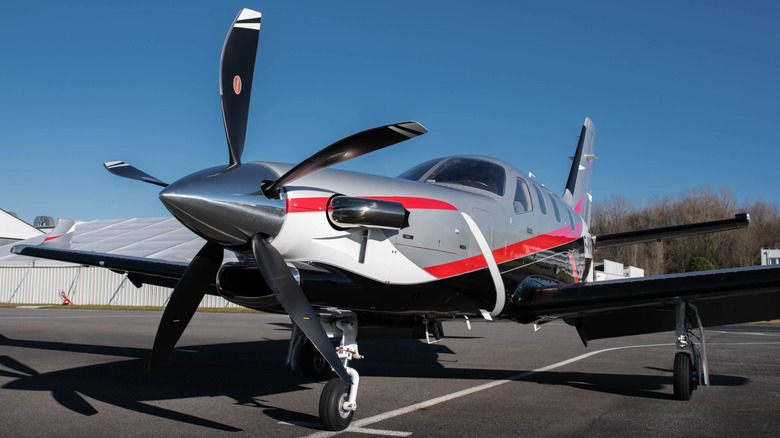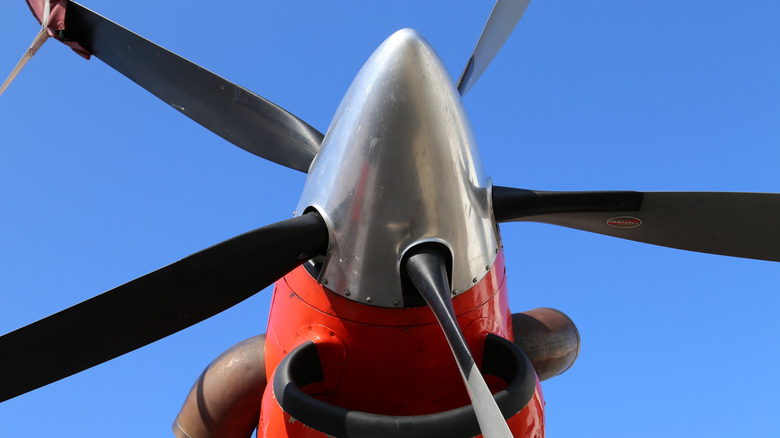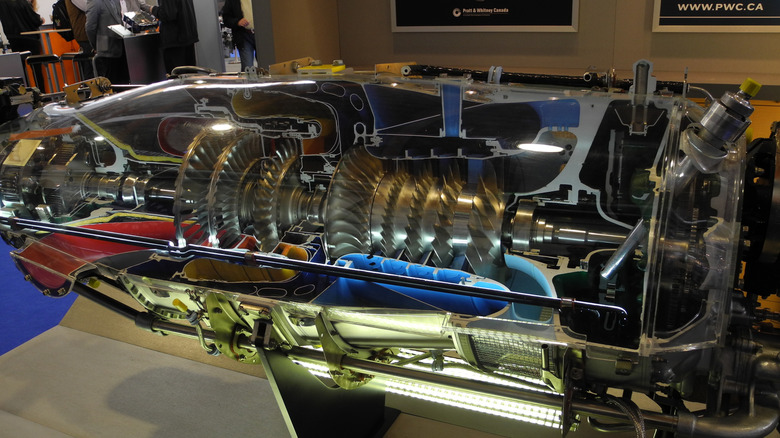Do Airplanes Use Transmissions? Turboprop Reduction Gearboxes Explained
Today's passenger aircraft house some of the most cutting-edge innovations in engine technology, and that list most certainly includes turboprop engines. In layman's terms, a turboprop is a jet engine driving a propeller, which is a popular layout for medium-sized commercial and high-end single-engine aircraft, as well as some cargo planes like the C-130. Do such engines feature a transmission, like ground vehicles? The answer to that question is actually yes-and-no.
A turboprop is defined by the "prop" suffix, meaning it directly drives the propeller via an integral component, whereas a turboshaft utilizes a similar engine layout that then links into a separate transmission. This configuration is often used in rotary-wing applications which necessitate turning the engine's main output shaft 90 degrees, and rotate at far lower rotor revolutions per minute than propeller-driven fixed-wing aircraft. If you want to fit a jet engine to one of those, you need a different mechanism to drive the propeller: A reduction gearbox.
Reduction gearboxes mechanically reduce a shaft's output rpm through the use of two or more gears. In the case of a turboprop, that means the engine's output shaft connects directly to the gearbox, meaning the engine may spool at a far higher rpm than the propeller it drives. The most basic configuration of this is a set of two fixed gears which rotate at a set speed, though many adopt more complex mechanisms, such as the epicyclic planetary gearbox featured in the Pratt & Whitney PT-6 family. These gearboxes aren't too dissimilar from a car's transmission, and perform similar work despite not being "true" transmissions.
How reduction gearboxes determine propeller rpm
Because propellers are most efficient at certain speeds, an engine's reduction gear-ratio is governed by the relationship between the engine's maximum revolutions per minute and the propeller's diameter. The larger the prop's diameter, the faster the tip will move for a given rpm. Let's use the world's fastest commercial turboprop as an example: the Daher TBM 900 family.
The latest aircraft utilize a PT-6E powerplant driving the propeller at 1,925 rpm at maximum thrust. These engines spin extraordinarily quickly, with a PT-6 hitting about 35,000 rpm; this means that the reduction gearbox requires an 18.18:1 ratio in this application. This then connects to the Propeller Interface Unit (PIU) that houses the propeller governor, which fine-tunes the prop's rpm. It performs this function by utilizing oil pressure to change the pitch of the propeller blades, essentially forcing them to beat more air. This, in turn, generates additional drag, slowing the prop down. This is called a variable-pitch propeller, universal in modern turboprop powerplants.
In short, you start with an extremely high engine shaft speed. This drives a reduction gearbox operating at around a 15 to 23:1 ratio, which determines the output shaft's speed. The output shaft then connects to the prop speed governor, which changes the angle of attack of the propeller blades to maximize their efficiency and maintain a constant propeller rpm. A standard turboprop will generally see no fewer than three distinct speed changes from Point A to B, with the reduction gearbox responsible for the most dramatic speed changes.
The purpose of a reduction gearbox in turboprop aircraft
If you're curious as to how exactly a turboprop can run at multiple thousands of rpm, this video explains the basics in more detail. That said, an aircraft's propeller simply cannot be directly driven at this speed without ripping itself apart. Some quick math tells us that a 96-inch prop seen on a PT-6-powered plane driven this way would reach about 20,000 miles per hour at the tip.
A reduction gearbox's job is to take this number and shrink it down to subsonic speeds before the governor fine-tunes it. Most propellers operate subsonically because they lose efficiency and are incredibly loud at the sound barrier. The loudest aircraft ever made, the XF-84H "Thunderscreech," used such a prop. This is counterproductive to the general principles of why turboprops are so popular: efficiency, reliability, and smooth operation in short and medium-distance flights.
This makes the reduction gearbox one of the most critical components of the turboprop engine. In fact, even many non-turboprop engines utilize reduction gearboxes because their most efficient RPM exceeds the output's maximum speed, including piston engines. Known as a Propeller Speed Reduction Unit (PRSU), these gearboxes frequently see use on especially high-RPM applications like ultralights, or high-horsepower piston aircraft like classic fighters. Because a turboprop's core spins about 10 times faster than even these engines, this means that reduction gearboxes are absolutely essential for their normal function.


